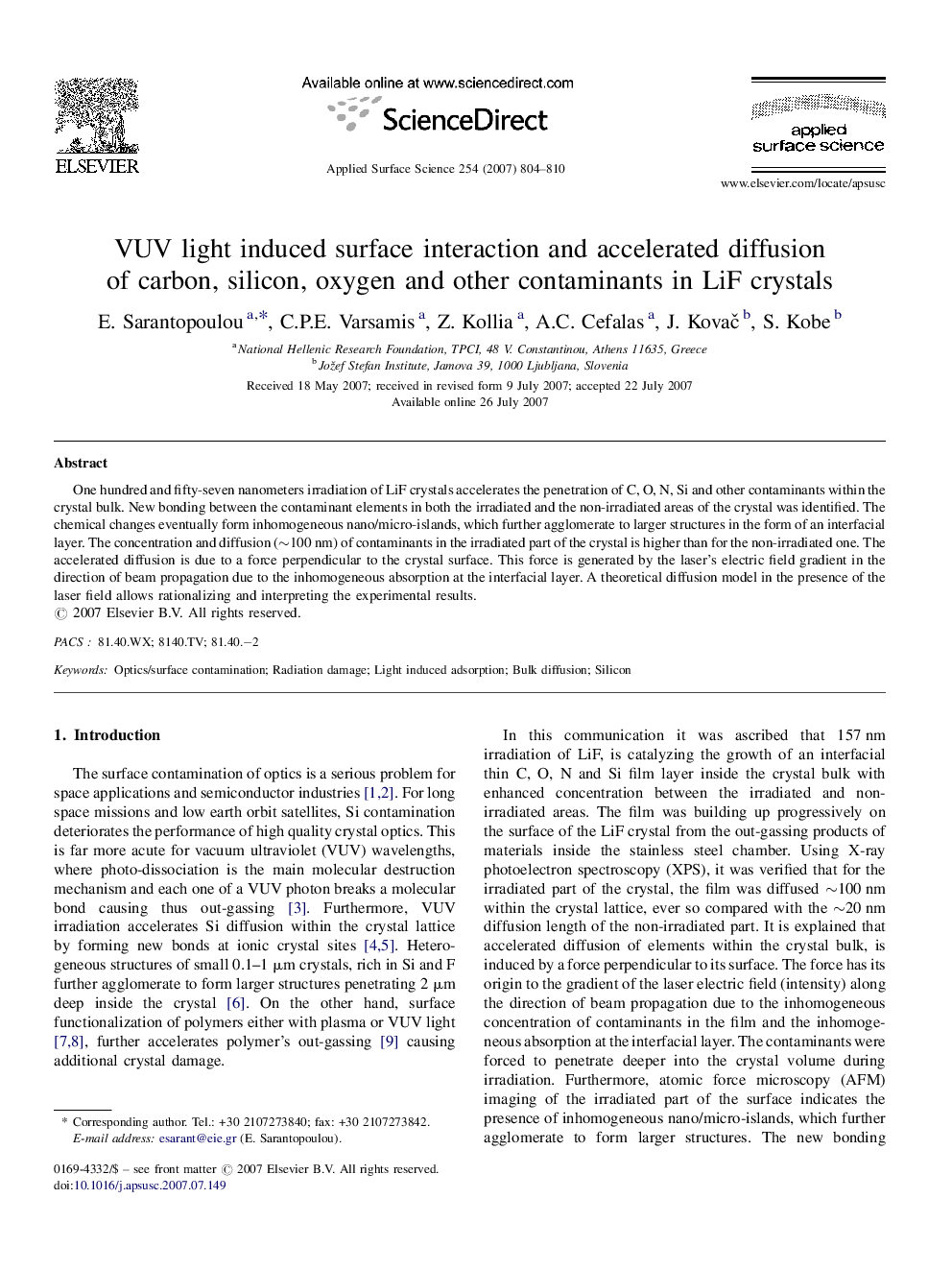| Article ID | Journal | Published Year | Pages | File Type |
|---|---|---|---|---|
| 5368120 | Applied Surface Science | 2007 | 7 Pages |
One hundred and fifty-seven nanometers irradiation of LiF crystals accelerates the penetration of C, O, N, Si and other contaminants within the crystal bulk. New bonding between the contaminant elements in both the irradiated and the non-irradiated areas of the crystal was identified. The chemical changes eventually form inhomogeneous nano/micro-islands, which further agglomerate to larger structures in the form of an interfacial layer. The concentration and diffusion (â¼100Â nm) of contaminants in the irradiated part of the crystal is higher than for the non-irradiated one. The accelerated diffusion is due to a force perpendicular to the crystal surface. This force is generated by the laser's electric field gradient in the direction of beam propagation due to the inhomogeneous absorption at the interfacial layer. A theoretical diffusion model in the presence of the laser field allows rationalizing and interpreting the experimental results.
